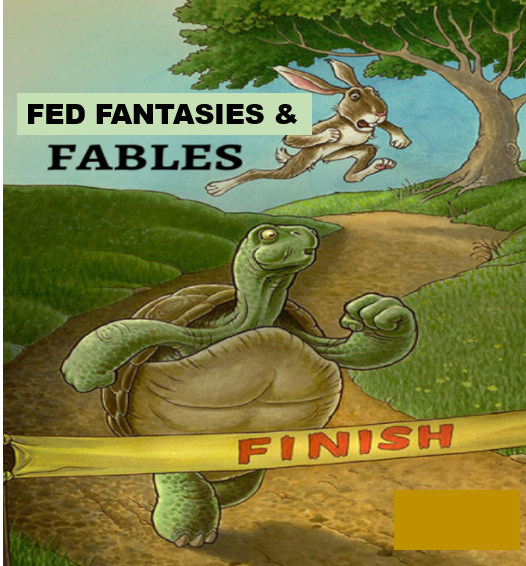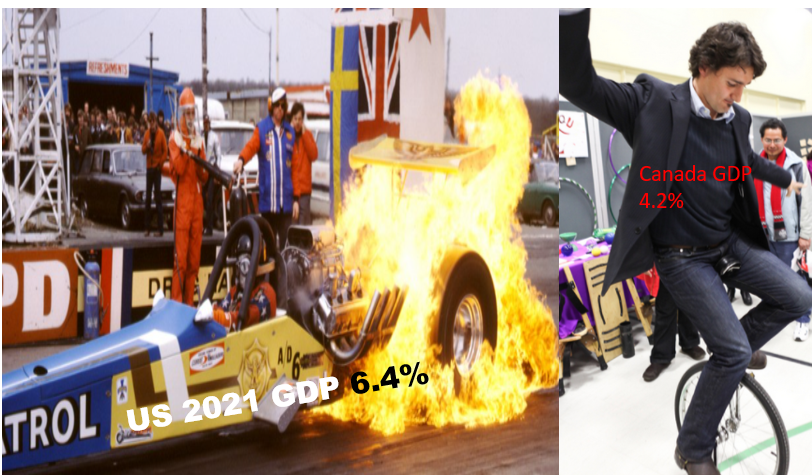
By Michael O’Neill
“Once upon a time….”
Hans Christian Andersen opened many of his fairy tales with that phrase two-hundred years ago, and it is implicit in Federal Open Market Committee statements today.
The FOMC will meet another seven times in 2021, and at each of those meetings it will reiterate its dual mandate; “The Committee seeks to achieve maximum employment and inflation at the rate of 2 percent over the longer run.” Cynics were heard to mutter “if wishes were fishes…”
The statement implies that Committee members were only concerned about the risks to their economic outlook in the short-term since they dropped “medium-term” from the text. That is a “glass-half full” view.
Mr Powell said that the “fiscal response has been strong, which is one reason the recovery has been robust.” He claimed the Fed’s policies were working thanks to “strong guidance on asset purchases and interest rates leading to “strong activity in housing, durable goods, and automobiles.”
The more optimistic Fed outlook suggests US interest rates could move higher this year. Do not bet on it. Mr Powell responded to a question about tapering (when the Fed reduces bond purchases, it raises interest rates) with an abrupt “it’s too soon.” He said the FOMC needs to see substantial progress on inflation and employment before it could be considered. The Fed also believes that even if inflation rises in the short term, it will be temporary.
Is the Fed too cautious? In December, they predicted 2021 GDP growth of 4.2%. The January surge in coronavirus cases suggests that they have not changed their view.
Economists at Goldman Sachs have a more aggressive view. They forecast US economic growth at 6.4%, supported by Biden’s stimulus program. Bank of Nova Scotia is projecting US growth at 5.0% while IMF economists estimate 2021 GDP at 4.3%. A recurring theme in these forecasts is that the availability and distribution of COVID-19 vaccines will be to the economy what nitrous-oxide is to a funny car.
Canada brings a unicycle to a vaccination drag race.

US will “Feel the burn” -Canada will just wobble” Photo: Wikipedia/IFXA Ltd
The availability of an effective COVID-19 vaccine will make the difference between an economic boom or an economic burp. Canada is in the burp category. Canada only administered 817,000 as of January 24, compared to 20,538,000 in the United States. It is going to get worse. Canada did not get any vaccines this week and will receive less than 60% of expected shipments in February. The US does not have such a problem. They make vaccines in-country.
The Bank of Canada Monetary Policy Reports said, “with effective vaccines now rolling out, the prospects for a strong, sustained recovery through the second half of the year have improved. Except they have not. They have gotten worse.
It also means that the Bank of Canada (BoC) will be rapidly distancing themselves from their optimistic comment in the MPR. It said, “However, if the economy and inflation play out broadly in line or stronger than we projected, then the amount of quantitative easing (QE) stimulus needed will diminish over time.” That forecast is more suitable for their 2022 outlook.
Canada is not the only economy that will lag US growth. The European Union is also looking a little like a basket case. Italian Prime Minister Giuseppe Conte resigned after a key coalition partner pulled support over his plans to spend the EU Recovery plan funds. Markets will be worried about the risk of far-right, anti-EU parties making in-roads.
The EU has its own COVID-19 crisis. They have rising infections from mutant strains, while a major supplier struggles to provide vaccines. COVID-10 restriction fatigue has sparked riots in the Netherlands, Denmark, and Spain. The European Central Bank is in a wait and see mode, and verbally pushing back against a higher currency.
The UK is well along the COVID-19 vaccine road, planning to vaccinate 15 million people by the middle of February. However, there may be a glitch in the plans. The EU is threatening to block vaccine shipments outside its borders. In addition, the economy is digesting the new EU trading rules in the post-Brexit world.
The year started with a “risk-on bias, driven by vaccine rollouts, expectations of US fiscal stimulus, and ultra-low interest rates. The US dollar was expected to sink as investors flocked to the so-called risk assets.
The reality is that the US is still the best destination for capital. Officials are pumping fiscal and monetary stimulus into the economy. Americans are getting vaccinated at an impressive clip, and far quicker than the competition. That suggests a quicker economic recovery. The US dollar has likely seen its lows for the near term, particularly against the Euro and Canadian dollar.
FOMC and BoC forecasts may not be fairy tales, but their forecasts would undoubtedly put a smile on Aesop’s face.





